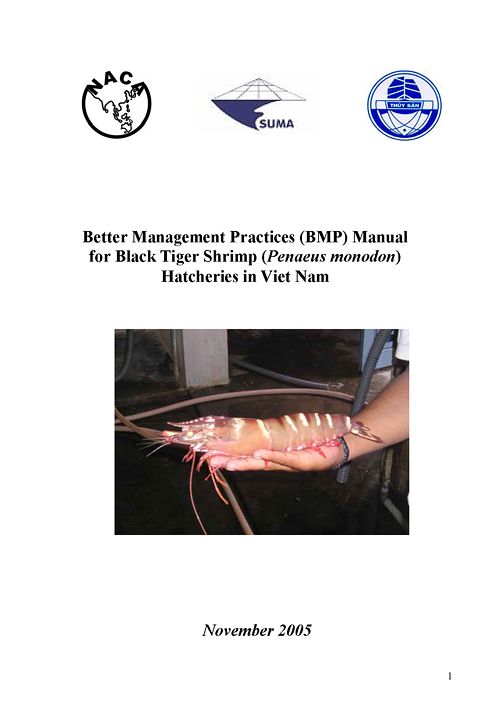Better management practices manual for black tiger shrimp (Penaeus monodon) hatcheries in Viet Nam
8 January 2006 | 1663 Downloads | .zip | 1.92 MB | Better management practices, Genetics and Biodiversity, Hatchery and nursery, Health and Biosecurity, Nutrition and feeding, Education and Training, Vietnam, Water quality
The production of black tiger shrimp (Penaeus monodon) seed has been conducted in Vietnam for nearly 20 years. Currently, there are more than 5,000 hatcheries throughout Vietnam which produced a total of 26 billion PL in 2004. The two provinces of Khanh Hoa and Ca Mau are considered the major seed production centres. To date, hatcheries have been able to supply the demands of the commercial shrimp farms but variable seed quality, and the prevalence of diseases has resulted in huge damages to both the hatchery and grow-out sectors.
In order to provide practical and effective technical guidance for shrimp hatchery management, it is necessary to establish a set of better management practices (BMPs) which underpin an effective hatchery production system. These include the presence of essential infrastructure, the development of the maintenance of biosecurity, the provision of adequate amounts of clean water, the responsible use of chemicals, correct feeding practices, and the assurance of the health status of stocks through in-house and laboratory testing.
This document is not a complete manual on the management of P. monodon hatcheries, but rather, it concentrates on the implementation of BMPs for the hatchery covering all of the critical stages and processes in the production cycle, which are currently believed to be causing problems in Vietnamese hatcheries.
This document is also available in Vietnamese (bundled in the download).
Creative Commons Attribution.

